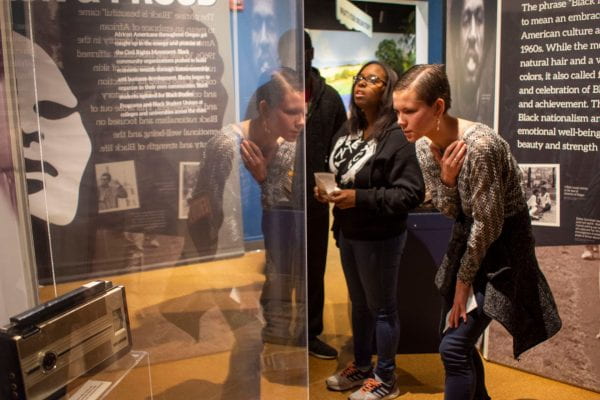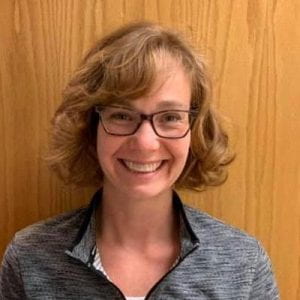MUSEUMS AS INSTRUMENTS OF CHANGE
By Ann Craig
Director of Exhibitions and Public Programs
The Museum of Natural and Cultural History has a long tradition of digging into the past to learn about histories that aren’t widely understood or appreciated. In the fall, we unveiled two landmark exhibitions with the same intent. Blake Little: Photographs from the Gay Rodeo and Racing to Change: Oregon’s Civil Rights Years—The Eugene Story have expanded our traditional focus to include more (and more recent) cultural histories. In the process, they’re moving us closer to our goal of being a more inclusive and equitable museum.
By sharing stories from the 1960s through the 1990s, the exhibits present us with new opportunities and challenges. For many of us, these stories have unfolded in our own lifetimes, and as we hear them, they may awaken nostalgia. They may also unnerve us: If an experience described by another is significantly different from our own memory, we may be startled by the disparity.
If these histories are new to you—and for many of us, they are—we hope you will pause to investigate. Have you ever heard of the gay rodeo? I hadn’t, and it’s been happening near me for decades. And while I was aware that Oregon had the distinction of being the only state admitted to the Union with Black exclusion laws in its constitution, I hadn’t realized that local housing covenants still contain racist (and legally unenforceable) language—one of many truths that have made civil rights activism a necessity in Lane County. Why have these stories been absent from mainstream narratives for so long? And what becomes possible when we work to amplify historically marginalized stories, as these exhibits are designed to do?

Museums are for learning. Historically, curators have pulled items from collections vaults, put them on display, and told us what they think we need to know about them—and by extension, about culture, art, and science. But the responsibilities of museums are changing. We’re not here simply to impart curatorial knowledge. Rather, our charge is to illuminate for everyone the stories that are already known by a group of insiders. The act of public exhibition exists to elevate and make central the knowledge, experiences, and perspectives of those insiders. That means describing Indigenous technology that has been known for millennia among Tribal members but seems new and innovative to others. It means overturning the assumption that LGBTQIA+ heritage is mutually exclusive with rodeo and rural Western heritage. It means facing the painful truth that, not so long ago, the butte overlooking downtown Eugene was home to a KKK sign broadcasting support for white supremacist ideals.
The exhibits encourage us all to examine our biases and take action against the injustices we perceive in our own communities. We hope they inspire you. We invite you to explore them, to rethink the past, and to join in a dialogue about how we can create an increasingly just future.
NEXT: MUSEUM ADVISORY COUNCIL—MAC on the Move


Please return a reply…..have found an unusual stone projectile point that is rounded from the shaped pointed tip to stem…1 inch long, 1/2 inch wide……with a hollowed out center at the base that makes it appear to have been the broken tip of a longer point used to place the shaft inside the hollowed end…material is a crystallized agate..will gladly send photos. There appears to have been two side wings along the outer side of the point and the worked surfaces have a wonderful curved fluted pattern. Found in the Harper valley area of Eastern Oregon under some +foot of earth. This Harper Westfall area has many projectile points, and I believe very rich in ancient Great Basin history in some unexplored areas of big caves along early Indian trails.
Thanks for getting in touch! Your best bet is to reach out directly to our Archaeological Research team at 541-346-3031 or connolly@uoregon.edu.